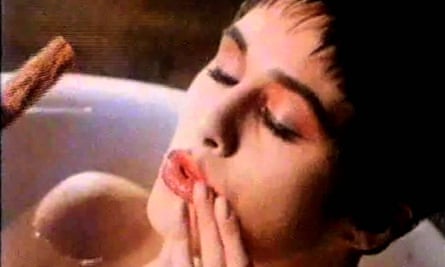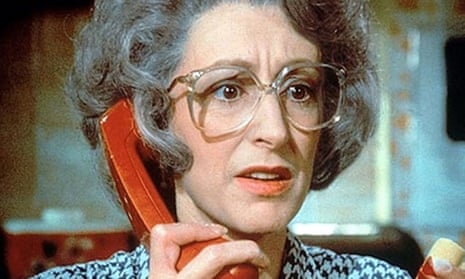The name British Caledonian – the Scottish airline – is a blast from the past. So, too, is its popular television ad, aired from 1983. To the tune of the Beach Boys’ classic California Girls, a group of suited male passengers each sing the virtues of “air hostesses” of different nationalities. The song culminates in a rousing chorus of “I wish they all could be Caledonian Girls” after the verse line “Those beautiful far eastern girls do splendid things with rice, but there is only one girl we want to see as we reach the departure gate.”
It was seen as a bit of fun at the time, but now comes as a salutary reminder of how television commercials reflect changes in attitudes. Next month, a film made to accompany a series of events at a London museum is to chart the way women have been represented in British TV ads over 50 years. While advertisers still need fresh gimmicks to persuade the public to buy one brand of cereal over another, they remain effortlessly skilful at shaping the way we see ourselves.
“Overwhelmingly, women’s roles have been defined more narrowly than men’s,” said Lindsey Clay, the former advertising executive who has made the film 10 from 50 to mark international women’s day on 8 March and to launch the Museum of Brands, Packaging and Advertising’s new season of themed events.
“I have picked out 10 key adverts. I could have easily done it as a terrible indictment of the way the media has represented women, because there are certainly plenty of examples of that. Instead, what I have tried to do is balance that with those ads that have really moved things forward,” said Clay, who now runs the marketing body Thinkbox.
A heavy focus on women’s appearance is a perennial factor. Women watching TV in the 1970s were invited to wonder if they might ever “fly like a bird” because they ate Nimble low-calorie bread – unless, that is, they were already “a Slimcea Girl”. Nowadays female viewers can judge themselves against the sylph-like frames of Charlize Theron and Keira Knightley, who endorse major perfume brands.
The default use of scantily clad women, whether to decorate new sofas, cars or bathrooms, is now not so common, but Clay’s new film identifies the persistent portrayal of women as key domestic workers.
“What I have done is to find the best examples of women shown in a domestic setting. It is a continuing theme, so I have picked out the Shake n’ Vac commercial, which has survived as a bit of an icon for creating such an insanely house-proud woman, and then Fairy Liquid’s “Hands that do dishes...”, which was an incredibly powerful campaign.”
To a degree, such adverts simply addressed the facts of the world around them. Research seen by Clay during her time at the agency JWT confirmed it was women who still did the lion’s share of household chores. This proved particularly true of laundry, a task felt to require a level of domestic intimacy and control that many women embraced.
Social habits have, however, altered since the Scottish actress Molly Weir urged housewives to choose Flash to help them mop their floor tiles in the 1970s, and television ads have adjusted accordingly. Men are more frequently shown looking after children, if not mopping the floor. And the casting of a black actress to play mother in a domestic family setting is no longer a reason to freeze-frame and celebrate.
In the 1990s even Fairy Liquid updated its outlook with an ad that featured a man washing up while his son looked on, impatient to use the empty plastic bottle to make a rocket.
“It might seem a bit rotten to criticise Fairy Liquid for taking a step forward,” said Clay, “but it’s the son, not the daughter, who is now shown with the ambition to create or engineer something.”
Humour is repeatedly used to soften consumer messages. Jennifer Aniston famously mocked “the science bit” in a shampoo commercial. But the wit also softened the social conditioning quietly at work. Aniston is conspiratorially directing her female audience to ignore all but the supposed glossy effect on her hair “because you’re worth it”.
Ads like the one for Harmony hairspray in the 1970s perpetuated the idea that a woman’s main aim was to appeal to as many men as possible, as a series of potential suitors asked: “Is she, or isn’t she?” A later campaign for the deodorant Impulse showed men who “just can’t help” handing flowers to a fragrant woman.
However, as commercials moved away from predictable stereotypes, many of the conventional gender roles were helpfully turned on their head.

So in the Diet Coke campaign a topless workman distracts a group of working women. “This ad shifted things because the man was the object of desire and the women were choosing to give their lustful attention to him,” said Clay. “It was a safe, funny fantasy in which the man was not belittled.”
In the 1980s and early 1990s, the ironic era of the “ladette”, several of the older stereotypes were smuggled back in, with female comics such as Sara Crowe and Anne Bryson leading the Philadelphia campaign with their deliberately dopey, office girl, comic shtick. More dubious still, for Clay, was the ad for the new Volkswagen Golf in 1987 in which the model Paula Hamilton divested herself of the trappings of a relationship with an implied sugar daddy, including pearls and a mink coat, keeping only the car.
“It was regarded as being a feminist statement then, but we have to take that with a pinch of salt now,” said Clay, who hopes to see women increasingly used as generic representatives of humanity.
She salutes the “groundbreaking” Apple ad of 1984 with its images of a dystopian Orwellian future that saw an athletic young woman rushing into a huge meeting with a hammer and smashing a screen: “She was not a virago. She was just an emblem of the future.”
But there is still a tendency to cast women as mere “fillers” in a central story about a man, she adds. “We repeatedly have to ask ourselves whether doing it with humour really makes it fine,” said Clay. “Also, men have been allowed to move into the nurturing space on screen more than women have moved into the business and career space.”
Some of the most progressive work is currently done in overtly campaigning consumer drives, such as the use of real women in Dove commercials. A shining example for Clay is the hugely successful 2014 Procter and Gamble effort to challenge the negative associations of the phrase “like a girl” in their adverts for Always sanitary protection. “The ad won awards, but it was only on telly in American because it was so long. It made a welcome change from seeing scientists in labs pouring test tubes of blue liquid, or girls on roller skates in tight white hotpants.”
She also praises Channel 4’s 2012 Meet the Superhumans Paralympic campaign alongside its recent decision to offer a million pounds of airtime as a prize for a commercial that feature a positive image of disability, resulting in a 2016 advert for Maltesers.
In the last six months Unilever has also attempted to put its associations with “the Lynx effect” behind it by announcing that it plans to “unstereotype” its adverts after research suggested that only 2% of TV ads showed intelligent women.
Part of the blame for a slow pace of change must lie with advertising agencies. A report by Digiday last month revealed that the majority of the women inside the industry work at lower salary levels, while last year a group of women in advertising complained that a macho culture still dominated their working environment.
Like British Caledonian itself, these days overtly sexist airline ads have more or less gone with the wind – although in 2009 Virgin Atlantic got into trouble with its 25th anniversary ad, a colourful 80s pastiche that cost £6m. The Advertising Standards Authority received protests about the way the female cabin crew were portrayed. Since then Virgin has altered its approach. Its current campaign, “Flying in the face of ordinary”, celebrates the superhuman qualities of its staff of all genders and skin colours.

WOMEN IN ADVERTS
Carers
Frequently middle-aged and well-meaning, not always mums; see Maureen Lipman as Beatie (BT) with her “ologies”, or Malcolm’s nagging mum pushing Vicks Sinex. The late Lynda Bellingham’s Oxo mum was its warmest incarnation.
Sophisticates
Superior types, such as Joan Collins with Leonard Rossiter in the Cinzano ads, need taking down a peg or two. Lorraine Chase in the Campari ad and Melanie Sykes with her pint of Boddingtons were both undermined by their accents.
Ideals
Sometimes both romantic and sexy, like the woman eating a Flake chocolate bar in a poppy field or the mysterious hooded Scottish Widow. Seldom utter a word.
Domestic obsessives
Women consumed with worry about washing their whites. Memorably parodied in the Shake n’ Vac campaign.

Comments (…)
Sign in or create your Guardian account to join the discussion